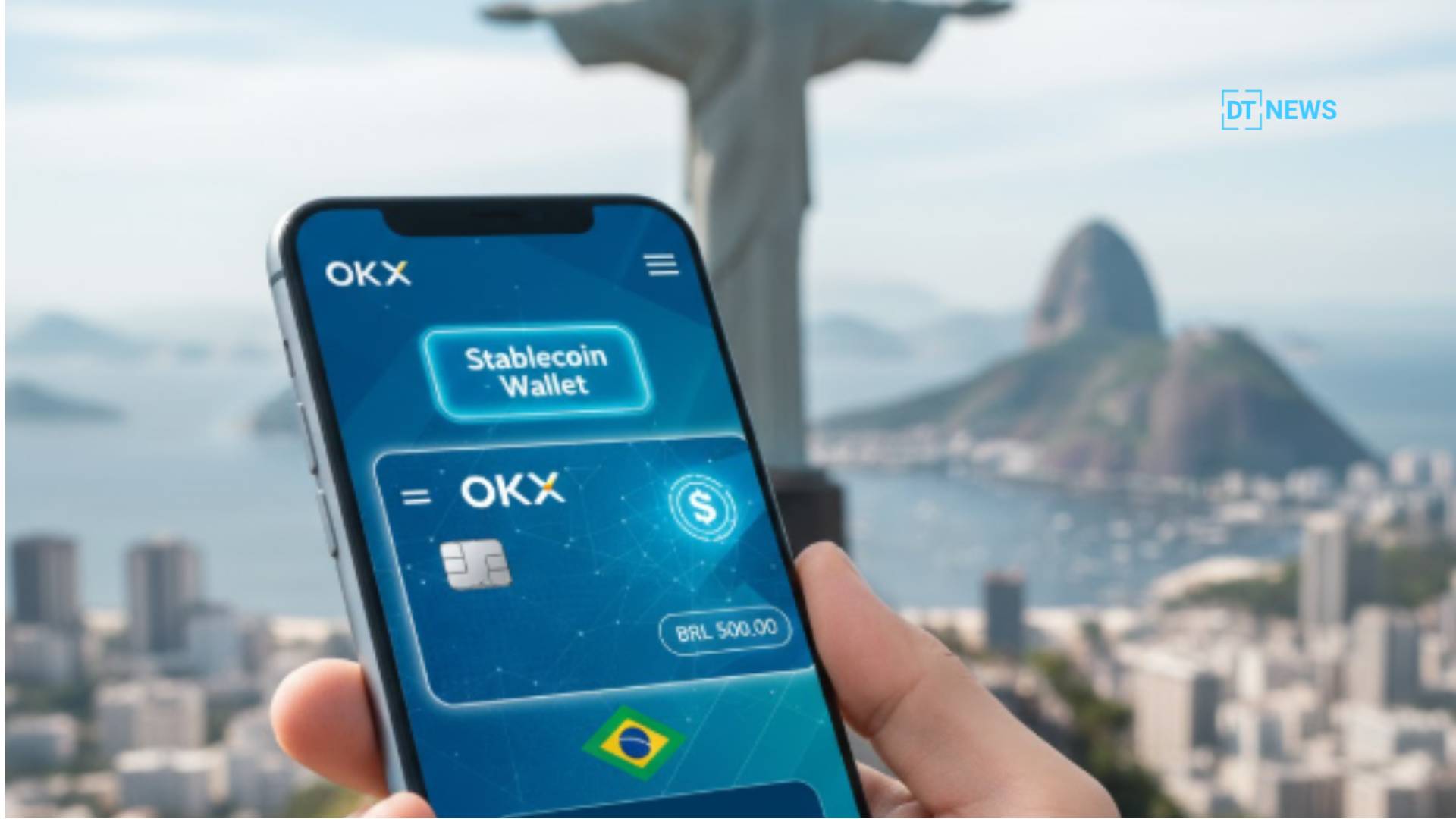Brazil just picked up a new on-ramp to digital dollars. OKX rolled out a stablecoin wallet called OKX Pay alongside an internationally accepted debit card issued on Mastercard. Together, the products let residents convert reais to USDC or USDT, hold dollars, and pay at any terminal that accepts Mastercard, online or in stores. The aim is simple: reduce friction between on-chain money and real-world checkout.
How the flow works from app to checkout
A user tops up in BRL, usually through PIX, then converts to a dollar stablecoin inside OKX Pay. At the point of sale, the OKX Card draws on that balance, while merchants still receive local currency through existing rails. The card supports tokenized wallets, so adding it to Apple Pay or Google Wallet is straightforward and contactless. The wallet experience focuses on stablecoins first, positioning digital dollars as the everyday account rather than a speculative side pocket.
Fees, taxes, and the Brazil advantage
Local cardholders know that international purchases can pile up hidden costs. OKX markets the card with no IOF on foreign transactions and no FX spread on settlement, which, if reflected in real-world billing, would remove two of the biggest sources of surprise on monthly statements. That pitch will resonate with travelers, freelancers paid in dollars, and online shoppers who straddle markets.
Yield on digital dollars, with fine print to watch
The company also advertises yield on stablecoin balances inside OKX Pay. Depending on the locale and page, the headline ranges from 5 percent to as high as 10 percent APY. Rates change, terms apply, and the source pages show variation, so readers should treat the yield as promotional and time-sensitive rather than a permanent fixture. Still, a native earn feature inside the same wallet that powers the card makes the product feel like a dollar account that happens to be on-chain.
Why this move matters now
Stablecoins have been edging from trading desks to mainstream payments for years. Earlier initiatives from the network behind the card laid the groundwork for wallet-to-checkout flows, allowing consumers to spend stablecoins while merchants settle in their preferred currency. That is the crucial bridge in a market where instant payments like PIX already set the user-experience bar high. OKX is slotting its wallet into that reality rather than asking users to change habits.
Competitive picture and adoption cues
Brazil has become a testbed for crypto cards and hybrid payment models. The difference here is the stablecoin-first design and the direct link between a user’s dollar balance and an accepted card rail. Coverage across industry outlets points to native NFC support in the app, global acceptance via Mastercard, and a focus on consumers who want to earn, save, and spend in dollars, without conversion drag. If activation is smooth and the fee promises hold up, user growth should show up quickly in card provisioning and in-app top-ups.
Risks, compliance, and what to verify
Users should confirm supported stablecoins at launch, monitor any caps on earn rates, and watch for changes in tax treatment as regulators continue to refine rules. As with any card program, limits, KYC requirements, and geographic constraints can apply, and terms may evolve as the product scales. The bigger picture is clear enough. Stablecoins are moving from watchlist to wallet, then to checkout in a single tap.
Conclusion
This launch turns digital dollars from an asset on an exchange into money people can actually spend. It fits Brazil’s fast-moving payments culture, trims international frictions, and tightens the loop between saving and spending in USD. The playbook is straightforward. Make stablecoins boring, useful, and invisible at the moment of payment. If that holds, adoption will follow the tap.
Frequently asked questions
Which stablecoins are supported at launch?
USDC and USDT are the headline options, with conversion from BRL available through PIX inside the wallet. Availability can expand over time.
Can merchants receive local currency while customers spend stablecoins?
Yes. The network behind the card handles settlement so merchants receive their usual currency, while the user spends against a stablecoin balance.
Are there international purchase taxes or FX markups?
Marketing materials state no IOF and no FX spread for foreign transactions, though users should review live terms in-app before travel.
Does the wallet pay yield on balances?
Yes, but rates vary by locale and can change. Corporate pages show ranges between 5 percent and 10 percent APY. Read current terms before opting in.
Glossary of key terms
Stablecoin: A crypto asset designed to track a reference value, often the US dollar, used for saving or payments.
PIX: Brazil’s instant payment system that enables fast BRL transfers between banks and fintech apps.
IOF: A Brazilian tax on certain financial operations, often applied to international card purchases. The product markets no IOF on foreign spending.
APY: Annual Percentage Yield, which reflects compounded annual returns on balances placed in an earn program.
Tokenized wallet: A mobile wallet that stores a virtual copy of a card for contactless payments, such as Apple Pay or Google Wallet.



















































































































